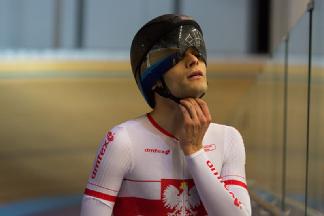WMG News
Where does all the plastic go? - Ton Peijs
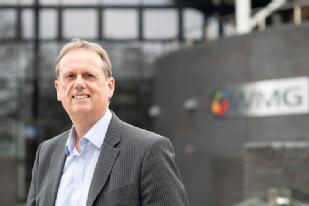 Although plastic is often thought of as a single use material, it actually lasts a very long time and can be used over and over again. In the UK around 45% of plastic is recycled and 30% is incinerated to generate electricity. The remaining 25% goes to landfill - wasting the value of the material, and causing the environmental impact we are all currently talking about. Although the UK has made enormous strides in reducing this amount over the past 20 years, we are a long way behind other countries that don’t send any waste to landfill, like Germany, Norway or the Netherlands.
Although plastic is often thought of as a single use material, it actually lasts a very long time and can be used over and over again. In the UK around 45% of plastic is recycled and 30% is incinerated to generate electricity. The remaining 25% goes to landfill - wasting the value of the material, and causing the environmental impact we are all currently talking about. Although the UK has made enormous strides in reducing this amount over the past 20 years, we are a long way behind other countries that don’t send any waste to landfill, like Germany, Norway or the Netherlands.
Levels of recycling
A 45% recycling rate sounds good, but its effectiveness is all about how much of the value of the product is re-used.
The most effective recycling is where the product is used in the same form for the same use.
Next comes the plastic being re-used – effectively as virgin material – to produce products of the same value. The problem is that plastic materials are often down-cycled into less valuable products because waste streams often contain many different types of plastic and mixtures of plastics mostly have inferior properties to pure plastics. For recycling to become more efficient, waste collection and separation systems must be improved. Products could also be designed for their whole lifecycle - including recycling.
If the plastics cannot be re-used, the plastic can be broken down into its chemical building blocks and re-used at that level.
Why incineration isn’t so bad
There are positive aspects to recovering energy from plastics through incineration, especially in the case of mixed or contaminated plastics that are difficult to recycle. Plastics are made from petrochemicals which are produced by the oil refining process. Plastics contain the same amount of energy as the oil they are made from and after a useful life they can be safely incinerated and converted into energy or electricity.
We need a systems approach
There is a complex problem to solve with plastics and a simple blanket ban may not be the answer if we want to create a more sustainable society. The solution could lie in a steep increase in recycling rates and the creation of a ‘circular economy’ where plastic materials are more effectively recycled at higher value uses.
Waste prevention, for example through use of less materials, is the preferred waste management option. It is followed by waste reduction through, for example reuse followed by recycling, recovery including incineration with energy recovery or compositing and as a last option, safe disposal.
WMG helps Senior Teaching Fellow break cycling world record
In a bid to fulfil a two-year ambition, Senior Teaching Fellow Piotr Klin teamed up with WMG to prepare the race package for his UCI World Masters Hour record attempt on July 21st.
Scooping the cycling accolade at his native Polish velodrome of Arena Pruszkow, Piotr’s distance of 49.649km beat the previous record for the 30-34 age group of 48.234km set by Britain’s Ryan Davies.
The World Masters Hour concept requires racers to ride around a velodrome and cover the furthest distance within 60 minutes. Having narrowly missed out on breaking the Polish hour record in August last year, Piotr collaborated with WMG at the University of Warwick to make technical advancements to his bike, utilising the state-of-the-art facilities at WMG.
Piotr reviewed the 3D printed parts within his bike to minimise the drag on the track, and commenting on his successes, the Coventry resident originally from Lublin in Poland said:
“This is a great achievement for me, and it feels extra special to do this in my home country. The extra time that I have spent training in the velodrome has paid off. WMG manufactured parts were custom made to best fit my body, using 3D scanning and printing techniques to deliver a custom cockpit fit, providing comfort during the longest hour in cycling.
“By leveraging the world-leading expertise and facilities through my collaboration with WMG, I’ve been able to bring the best race package I’ve had to-date and deliver this world record performance.
“I’m excited for new challenges following this milestone and look forward to collaborating with WMG further to post even faster times.”
By breaking the world record, Piotr added a further feather to his cap, which already includes a well decorated repertoire of accolades, including merits for being a three-time Polish Masters National Time Trial champion and his crown of Amateur Sportsman of the Year from the 2018 Coventry and Warwickshire Sports Awards.
Building on his successes, Piotr now hopes to go one better than his second place in 2017 at the UCI Gran Fondo World Championships Time Trial in Poznan in August.
Minister shown how WMG literally weaved design of Very Light Rail – Braided structure lightweight
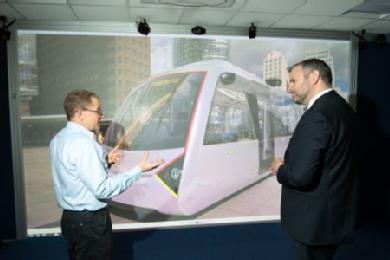 WMG, at the University of Warwick, has worked with partners, to create a new design of incredibly lightweight Very Light Rail (VLR) vehicle frame which is weaved, or braided, from carbon fibre composites into a series of tubes to create a first prototype demonstrator frame. Parliamentary Under Secretary of State and Minister for Business and Industry Andrew Stephenson became one of the very first people to see the new design, outside of the research partnership, on a visit to WMG on 16th May.
WMG, at the University of Warwick, has worked with partners, to create a new design of incredibly lightweight Very Light Rail (VLR) vehicle frame which is weaved, or braided, from carbon fibre composites into a series of tubes to create a first prototype demonstrator frame. Parliamentary Under Secretary of State and Minister for Business and Industry Andrew Stephenson became one of the very first people to see the new design, outside of the research partnership, on a visit to WMG on 16th May.
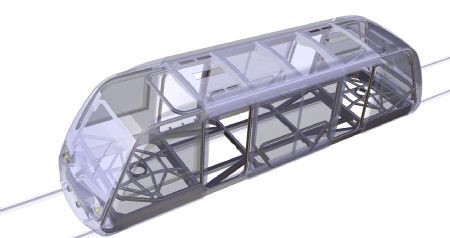 Working with the lightweight structural composite components company Far, and Transport Design International Ltd in Stratford upon Avon the demonstrator can be easily assembled by adhesive and simple welding.
Working with the lightweight structural composite components company Far, and Transport Design International Ltd in Stratford upon Avon the demonstrator can be easily assembled by adhesive and simple welding.
Dr Darren Hughes Associate Professor in Materials and Manufacturing at WMG at the University of Warwick said:
“Our BRAINSTORM VLR research partnership has achieved significant weight-saving, allowing VLR services to accommodate more passengers while reducing the energy required to propel the vehicle and the weight stress it will place on its rails and road surface.”
“The technology also ensures that the vehicle is tough for a long life in service, easily repairable when accidents happen and strong enough to protect the passengers on board.”
The innovative highly efficient very light weight approach consists of an underlying tubular spaceframe chassis which provides the body shell. In the first demonstrator frame the partners have produced they were able to keep the beams the same outside diameter but their wall thickness is tailored to give the optimum performance depending on where it will be used. This keeps the tooling costs low and allows for all the joining to be standardised through a combination of welding and adhesive bonding.
If any significant damage is caused to any individual beam through an accidental impact each damaged beam can simply be entirely replaced with a new one. Best of all the thermoplastic material is inherently recyclable.
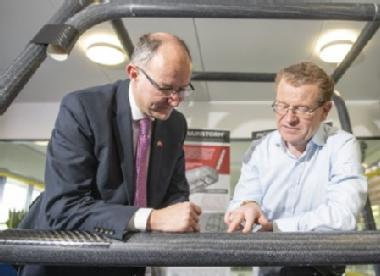 The whole moulding cycle has been shown to be capable of being reduced to less than five minutes, demonstrating the potential of this affordable process for high-volume applications. The braiding process is highly automated and with rates of over a mile a day of braided tubing.
The whole moulding cycle has been shown to be capable of being reduced to less than five minutes, demonstrating the potential of this affordable process for high-volume applications. The braiding process is highly automated and with rates of over a mile a day of braided tubing.
This braiding method also allows for a wide range of materials to be used. Almost any fibres (carbon, glass and aramid) can be combined with a huge range of thermoplastics, from low cost Polypropylene to high end Polyether ether ketone (PEEK) to create a material that suits the given application
Lyndon Sanders Director and General Manager of Nottingham based lightweight structural composite components company Far said:
“The BRAINSTORM Project feels like a real step forward to the team at Far Composites. Being able to tap into the industry experience of TDI to hone the principle of a new type of body structure for mass transit applications was great. Add to that the collaborative working with Composites Braiding and WMG to turn that thinking into a physical demonstrator to show what it would be like in practice was really powerful. Now it’s more than a good idea, now it’s an eye opener for industry players who can see it, touch it and even pick it up.”
ENDS
20 MAY 2019
Note for Editors:
High-res images available, please credit The University of Warwick:
The design of the frame with some other sections attached
https://warwick.ac.uk/services/communications/medialibrary/images/april2019/frame-cb1-2.jpg
Dr Darren Hughes (right) showing Lyndon Sanders Director and General Manager of Far (left of picture) the braiding pattern on the frame
https://warwick.ac.uk/services/communications/medialibrary/images/april2019/train_2_jpeg.jpg
Dr Darren Hughes Associate Professor in Materials and Manufacturing at WMG at the University of Warwick (left) showing Parliamentary Under Secretary of State and Minister for Business and Industry Andrew Stephenson (right of picture) all the design stages of the VLR vehicle
https://warwick.ac.uk/services/communications/medialibrary/images/may2019/brainstorm_pic.jpg
The frame with less attached
https://warwick.ac.uk/services/communications/medialibrary/images/april2019/frame-cb5-1.jpg
Another view
https://warwick.ac.uk/services/communications/medialibrary/images/april2019/frame-cb2-1.jpg
A further view
https://warwick.ac.uk/services/communications/medialibrary/images/april2019/frame-cb9-1.jpg
The Full list of partners on the project are: WMG at the University of Warwick, the UK's Governments innovation agency Innovate UK, Far composites, Composite Braiding ,and Transport Design International Ltd in Stratford upon Avon
For further information please contact:
Alice Scott
Media Relations Manager – Science
University of Warwick
Tel: +44 (0) 2476 574 255 or +44 (0) 7920 531 221
E-mail: alice.j.scott@warwick.ac.uk
High-resolution scanning helps secure guilty verdict against child’s mother
Researchers from WMG at The University of Warwick, have used a high resolution X-ray (micro-CT) scanner, a novel 3D imaging technology more commonly employed in industry and materials research, to scan 9 week old Teri-Rae’s rib cage.
The scans images with one thousand times of the detail of a hospital scanner, meaning they were able to detect 2 more microscopic injuries which could otherwise have been missed by conventional medical CT scanners.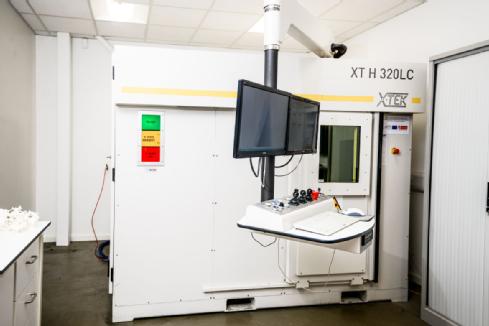
The evidence produced helped reveal a total of ten injuries of varying ages. 3D renderings of these injuries were shown during trial to provide visual context and support the bone specialist’s expert testimony.
This secured a guilty verdict for the charge of manslaughter for Teri-Rae’s mother Abigail Palmer, who has been sentenced today - 4th April 2019.
The work was conducted as part of an ongoing research partnership between Warwick University and West Midlands Police which uses such scanning technologies to support homicide investigations.
Professor Mark Williams of WMG at the University of Warwick comments:
“State-of-the-art 3D scanning technology allowed us to identify multiple fractures to Teri-Rae’s ribs that had occurred over an extended period of time.
“The ability to produce highly detailed 3D images of these shocking injuries that could be presented at court helped establish the truth and show what had happened. It’s an honour for us to provide critical evidence to this case, and to be able to help the police investigate such an unfortunate tragedy.”
West Midlands Police Sergeant Mick Byron from the Child Abuse Investigation Team, comments:
“We were able to show that Teri-Rae suffered 10 rib fractures over a four to 12 hour period between 3am and 11am on 2 January.
“Palmer had been at a pub for six hours on New Year’s Day but claimed to have drank mainly squash, not alcohol, as that would have breached a condition of the Child Protection Plan she was bound by.
“We don’t believe her… and neither did the jury. We suspect she came home drunk, was awoken by her baby in the night and inflicted these terrible images in response to Teri-Rae’s crying.
“Palmer admitted the baby was never out of her sight and never mishandled by anyone else; she offered no plausible accidental explanation for her daughter’s injuries. There was no indication Teri-Rae suffered a bone fragility condition and she was not independently mobile enough to have injured herself.
“Significant force is required to cause rib fractures in a baby… the presence of rib fractures in a baby of this age is indicative of abusive, deliberately inflicted, injury. This was a truly heart-breaking case to investigate, that a little baby’s life was taken by the one person who should have been protecting her.”
New technique to make transparent polythene films as strong as aluminium that could be used in impact resistant glazing, windscreens, and displays
Research led by Professor Ton Peijs of WMG at the University of Warwick and Professor Cees Bastiaansen at Queen Mary University of London, has devised a processing technique that can create transparent polythene film that can be stronger as aluminium but at a fraction of the weight, and which could be used use in glazing, windscreens, visors and displays in ways that add strength and resilience while reducing weight.
In a new research paper entitled “Glass-like transparent high strength polyethylene films by tuning drawing temperature.” Published online today - 1st April 2019 - in the Journal Polymer, the authors show that after carefully selecting the type polythene and by tuning the temperature during the creation of oriented polythene films a balance can be created that produces a highly useful and lightweight transparent material with a significant strength and resilience approaching, and in some ways, exceeding that of metals.
Previously anyone looking to replace heavy and often brittle glasses with a transparent plastic have looked at conventional transparent plastics like polycarbonate (PC) and poly(methylmethacrylate) (PMMA) both of which possess relatively unsatisfactory mechanical performance compared to an engineering material like aluminium.
Current methods of creating high strength plastic films such as hot-drawing of high-density polyethylene (HDPE) can lead to materials that can compete or even out-perform traditional engineering materials like metals.
“The microstructure of polymers before drawing very much resembles that of a bowl of cooked spaghetti or noodles, while after stretching or drawing the molecules become aligned in a way similar to that of uncooked spaghetti, meaning that they can carry more load” explains Yunyin Lin, a PhD student in Professors Peijs and Bastiaansen’s team.
However, drawn polythene materials normally have an opaque appearance due to defects and voids introduced by the drawing process, limiting applications where both mechanical properties and optical transparency are required.
Some success has recently been achieved by using highly specific additives in hot-drawn HDPE materials that can then produce 90% transparency while giving high strength. However, the research team led by Professors Peijs and Bastiaansen have now developed a new post-manufacturing technique for HDPE that endows strength and resilience while preserving transparency without using additives.
The researchers took HDPE polythene sheets and drew out these sheets at a range of temperatures below the melting temperature of HDPE. By tuning the drawing temperature they could achieve a transparency of 90% in the visible range. However, the best balance between strength and transparency was achieved at drawing temperatures between 90 and 110 degrees centigrade.
Professor Ton Peijs of WMG at the University of Warwick said:
“We expect greater polymer chain mobility at these high drawing temperatures to be responsible for creating fewer defects in the drawn films, resulting in less light scattering by defects and therefore a higher clarity”
The highly transparent films possess a maximum resilience or Young’s Modulus of 27 GPa and a maximum tensile strength of 800 MPa along the drawing direction, both of which are more than 10 times higher than those of PC and PMMA plastics. For comparison, aluminium has a Young’s Modulus of 69 GPa and aerospace grade aluminium alloy can have tensile strengths up to around 500 MPa. However, polythene has a density of less than 1000 kg/m3 while aluminium has a density of around 2700 kg/m3, meaning that on weight basis these high strength transparent polymer films can outperform such metals.
Professor Ton Peijs in WMG at the University of Warwick concludes that:
“Our results showed that a wide processing window ranging from 90 °C to 110 °C can be used to tailor the required balance between optical and mechanical performance. It is anticipated that these lightweight, low-cost, highly transparent, high strength and high stiffness HDPE films can be used in laminates and laminated composites, replacing or strengthening traditional inorganic or polymeric glass for applications in automotive glazing, buildings, windshields, visors, displays etc.”
Earliest known Mariner’s Astrolabe research published today to go in Guinness Book of Records
Guinness World Records have independently certified an astrolabe excavated from the wreck site of a Portuguese Armada Ship that was part of Vasco da Gama’s second voyage to India in 1502-1503 as the oldest in the world, and have separately certified a ship’s bell (dated 1498) recovered from the same wreck site also as the oldest in the world.
A gunmetal disc excavated from the wreck site of a Portuguese Armada Ship and identified as a mariner’s astrolabe – and the earliest known example - by engineers at WMG, University of Warwick is to be published in the The International Journal of Nautical Archaeology
The astrolabe was discovered by David L. Mearns of Blue Water Recoveries Ltd, who directed the three-year archaeological project in collaboration with Oman’s Ministry of Heritage and Culture
It has been named the Sodré astrolabe after the commander of the ship in which it was found: Vicente Sodré was the maternal uncle of Vasco da Gama and died when his ship, the Esmeralda, wrecked on the remote Omani Island of Al Hallaniyah in 1503.
It will be listed in the Guinness Book of World Records as the oldest mariner’s astrolabe from as early as 1496
The scientific process of verifying the disc as an astrolabe by laser imaging is described in a paper published today by Mearns and Jason Warnett and Mark Williams of WMG at the University of Warwick in The International Journal of Nautical Archaeology.
The Sodré astrolabe which has made it into the Guinness Book of World Records is believed to have been made between 1496 and 1501 and is unique in comparison to all other mariner’s astrolabes.
Mariner’s Astrolabes were used for navigating at sea by early explorers, most notably the Portuguese and Spanish.
They are considered to be the rarest and most prized of artefacts to be found on ancient shipwrecks and only 104 examples are known to exist in the world.
They were first used at sea on a Portuguese voyage down the west coast of Africa in 1481. Thereafter, astrolabes were relied on for navigation during the most important explorations of the late 15th century, including those led by Bartolomeu Dias, Christopher Columbus and Vasco da Gama.
It is the only solid disk type astrolabe with a verifiable provenance and the only specimen decorated with a national symbol: the royal coat of arms of Portugal.
As the earliest verifiable mariner’s astrolabe it fills a chronological gap in the development of these iconic instruments and is believed to be a transitional instrument between the classic planispheric astrolabe and the open-wheel type astrolabe that came into use sometime before 1517.
The thin 175 mm diameter disk weighing 344 grams was analysed by a team from WMG who travelled to Muscat, Oman in November 2016 to collect laser scans of a selection of the most important artefacts recovered from the wreck site.
Using a portable 7-axis Nikon laser scanner, capable of collecting over 50,000 points per second at an accuracy of 60 microns, a 3D virtual model of the artefact was created. Analysis of the results revealed a series of 18 scale marks spaced at uniform intervals along the limb of the disk.
Further analysis by WMG engineers showed that the spacing of the scale marks was equivalent to 5-degree intervals. This was critical evidence that allowed independent experts at Texas A&M University to include the disk in their global inventory as the earliest known mariner’s astrolabe discovered to date.
Prof Mark Williams from WMG, University of Warwick comments:
“Using this 3D scanning technology has enabled us to confirm the identity of the earliest known astrolabe, from this historians and scientists can determine more about history and how ships navigated.
Technology like this betters our understanding of how the disc would have worked back in the 15th century. Using technology normally applied within engineering projects to help shed insight into such a valuable artefact was a real privilege”
David Mearns of Blue Water Recoveries Ltd comments:
“Without the laser scanning work performed by WMG we would never have known that the scale marks, which were invisible to the naked eye, existed. Their analysis proved beyond doubt that the disk was a mariner’s astrolabe. This has allowed us to confidently place the Sodré astrolabe in its correct chronological position and propose it to be an important transitional instrument.”
First look at Coventry’s Innovative Light Rail Vehicle
Engineers and researchers at WMG, University of Warwick, are working alongside Transport Design International (TDI), based in Stratford, to develop a battery-powered, lightweight, rail-based vehicle to operate in Coventry.
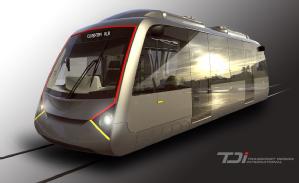 The WMG team, including engineers Darren Hughes and Andrew McGordon, are using their automotive engineering and battery expertise to assist TDI with the design of the vehicle for Coventry City Council, and now have a 3D simulation of the vehicle.
The WMG team, including engineers Darren Hughes and Andrew McGordon, are using their automotive engineering and battery expertise to assist TDI with the design of the vehicle for Coventry City Council, and now have a 3D simulation of the vehicle.
The vehicle will be battery-powered with the long term objective that it will become an autonomous vehicle, allowing more vehicles to operate intelligently and efficiently to meet passenger demand.
It will hold 50 passengers, and the longer term aim is that it will work like the London Underground system, where there is no timetable and people can hop on and off.
The vehicle will be a lightweight design using multiple materials including aluminium, steel and composites.
Due to being battery-powered there will be no overhead power supply which is both costly and has a negative impact to the city-scape. This feature provides future flexibility for operating on other non-electrified routes.
The first-of-a-kind design is available to view in 3D via WMG’s visualisation suite and the first test vehicle will be manufactured by mid-2020. TDI have partnered with Coventry-based Company RDM who will manufacture the vehicle once the design is complete.
A team of experts are also working to develop a new track system.
The Government’s Local Growth Fund through the Coventry and Warwickshire Local Enterprise Partnership (CWLEP) has contributed £2.46 million towards phase one of the research and design of the prototype and £12.2 million has been secured from the West Midlands Combined Authority (WMCA) Devolution Deal to undertake the research and development required to prove the VLR concept.
The WMCA has also allocated specialist resource from Transport for West Midlands to provide technical support, advice and guidance to the project team as the scheme develops.
Dr Darren Hughes, WMG, University of Warwick comments:
“The Coventry light-rail system will be innovative in bringing together technologies from a number of sectors to deliver a low-cost environmentally-sustainable public transport solution for the City of Coventry. Seeing the 3D simulation and envisaging how it will look within Coventry makes us look forward to building the first vehicle that will be ready for testing at a test track facility during 2020.”
 Councillor Jim O’Boyle, cabinet member for jobs and regeneration, comments:
Councillor Jim O’Boyle, cabinet member for jobs and regeneration, comments:
“Very Light rail is a fantastic innovation and it has the potential to transform the way people travel. It will be much more affordable to install than traditional trams, take up far less road space, be able to run alongside traffic and our ultimate aim is that it doesn’t require a driver so it can be a frequent service.
“Coventry has a rich traditional of vehicle manufacturing and now we are leading the way in future transport too. This Very Light Rail work, combined with our work on driverless and connected cars puts us right at the forefront of creating new, ground breaking solutions for future transport needs. They will be safer and more environmentally friendly and I hope go on to provide good job opportunities for local people too.”
Jonathan Browning, chair of the CWLEP, comments:
“Coventry and Warwickshire is at the forefront of battery technology and this exciting scheme emphasises our skills at leading the way in innovation.
“This new technology will bring more jobs and investment to Coventry and Warwickshire and it underlines the value of partnership working to boost the area’s economy.
“It is great news that the prototype of the Very Light Rail vehicle will be built ahead of Coventry being UK City of Culture in 2021 when the area’s profile will be boosted on a global stage.”
Smarter, greener, cleaner steel: £35 million boost for research to transform UK steel industry
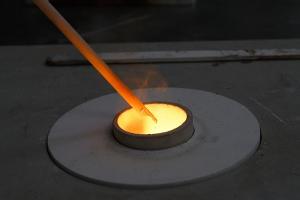 A smart, green and clean steel industry will come a giant step closer thanks to a new £35 million research network, announced today, which will see steelmakers and University experts work together on a seven-year research programme to transform the UK steel sector.
A smart, green and clean steel industry will come a giant step closer thanks to a new £35 million research network, announced today, which will see steelmakers and University experts work together on a seven-year research programme to transform the UK steel sector.
The network, called SUSTAIN, is to transform the whole steel supply chain, making it cleaner, greener and smarter, and more responsive to the fast-changing needs of customers. Its work will be concentrated on two areas:
· Zero waste iron and steelmaking, with the aim of making the industry carbon-neutral by 2040: Steel is already the world’s most recycled material, but the network will investigate new ways of making the industry’s processes and products even greener, such as harvesting untapped energy sources, capturing carbon emissions and re-processing societal and industrial waste streams.
· Smart steel processing: like any 21st century industry, steelmaking involves masses of data. SUSTAIN will develop new ways of acquiring and using this data to improve the steels produced as well as in new metallurgical processes, which can deliver bespoke high tech products.
Steel is the most widely-used structural material in the world. If a product isn’t made of steel it’s made using steel. Steel is at the heart of UK manufacturing sectors such as the car industry, construction, packaging and defence. It is an indispensable component of the UK’s future national infrastructure such as transport, communications and energy, and for high-tech 21st century industries, from energy-positive buildings to wind turbines and electric vehicles.
The work of SUSTAIN is projected to:
- Double UK steel manufacturers’ gross value added (GVA) by 2030
- Boost jobs in the industry to 35,000
- Increase productivity by 15%
SUSTAIN involves more than twenty partners across the UK steel industry: companies, trade bodies, research organisations and academic experts including WMG, University of Warwick. The network is being supported by £12.5M investment from the Engineering and Physical Sciences Research Council, as one of their Future Manufacturing Research Hubs, along with significant investment from the steel companies within the UK.
The announcement is a landmark as it is the first time that UK steel producers and representatives from the manufacturing sector have lined up behind a co-ordinated programme of research. It is also the largest ever single investment in steel research by a UK research council.
The plan is that SUSTAIN will be a seed from which much wider research and innovation will grow, drawing on expertise across UK academia and beyond.
Professor Claire Davis, from WMG, University of Warwick comments: “The UK has a rich tradition of research excellence and innovation in steel metallurgy. SUSTAIN will bring together leading research groups in this area, as well as introducing new expertise in big data and supply chain innovation, to work collaboratively with the UK industry.
The network will be able to tackle the large issues facing the steel industry, particularly in becoming low energy, carbon neutral, dynamic and responsive to customer needs. It is an exciting time to be working on steel as there are opportunities to contribute to making the planet a greener place.”
Dr Cameron Pleydell-Pearce, steel expert at Swansea University and SUSTAIN’s deputy director, said: “This news is a massive vote of confidence in the steel industry. It will support the industry’s vision for a responsible, innovative and creative future. We are already on the road to clean, green and smart steelmaking, but this is another giant step forward.
Research and innovation are the bedrock of a modern steel industry. This network represents almost the whole UK steel sector, with researchers and companies working together on an unprecedented scale. Here in Swansea we’re proud to lead it.”
Gareth Stace, UK Steel Director General, said: "This new boost of innovation funding into the sector is a vital piece of the puzzle to help deliver our vision of a cutting-edge, vibrant, and sustainable steel industry in the UK.
The future success of our sector rests on our ability to remain at the forefront of product and process innovation, delivering the new steel products demanded by our customers and society. This new hub will enable us to do just that.”
The virtual factory – boost for steel innovation with £7 million to speed up new alloy development
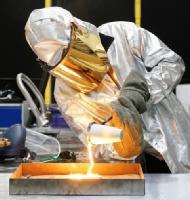 A new method of testing alloys - Rapid Alloy Prototyping, is 100 times faster than current methods, allowing new products to reach the market more quickly, thanks to £7 million of funding announced today for a new “virtual factory” designed by the Prosperity Partnership, including WMG at the University of Warwick.
A new method of testing alloys - Rapid Alloy Prototyping, is 100 times faster than current methods, allowing new products to reach the market more quickly, thanks to £7 million of funding announced today for a new “virtual factory” designed by the Prosperity Partnership, including WMG at the University of Warwick.
This Prosperity Partnership – led by Swansea University and involving WMG at the University of Warwick, will implement a Rapid Alloy Prototyping (RAP) process, thanks to £7 million of funding announced today from the Engineering and Physical Sciences Research Council (EPSRC)
Rapid Alloy Prototyping effectively means that much of the testing can be carried out in research labs and imaging suites - a virtual factory – rather than in an actual steel plant.
WMG part of a £37m project to develop lightweight vehicles
A new research project, Tucana, will focus on lighweighting technology, delivering stiffer and lighter vehicle structures with the help of experts from WMG, at the University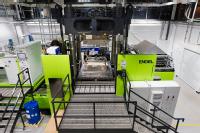 of Warwick.
of Warwick.
The research will develop world-leading cost effective, scalable carbon fibre composite solutions, with the view to boosting the performance of electric vehicles. The CO2 benefit of the project between 2023-2032, will be 4.5 million tonnes.
WMG will receive £4m, of the £18.7m government funding through the Advanced Propulsion Centre (APC), to drive the development of innovative lightweight vehicle and powertrain structures, building on the UK’s leading-edge capability in this area.
Project Tucana will allow the true environmental credentials of electric vehicles to be realised by enabling wider adoption. Tucana will deliver this step-change by addressing structural performance at a design, material and volume manufacturing-level which is currently unmet across the industry.

